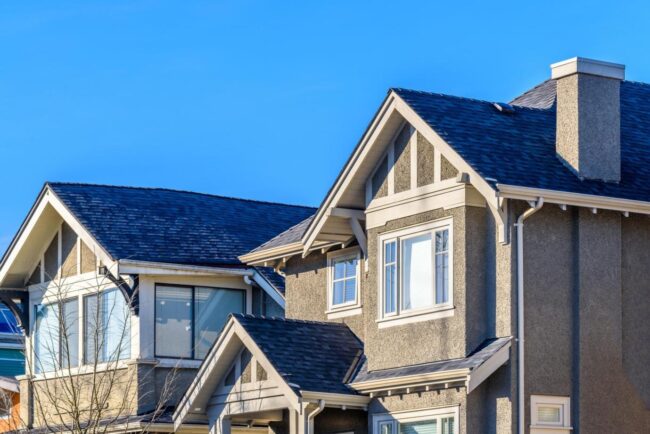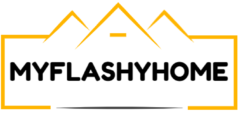
The right roofing material not only protects your dwelling from the elements but also enhances its aesthetic appeal and energy efficiency. Let’s explore five exceptional roof types that stand up to Seattle’s weather while complementing the city’s architectural charm.
When it comes to safeguarding your Seattle abode, the roof plays a pivotal role. It’s not just about keeping the rain out; it’s about choosing a material that can withstand the city’s notorious drizzle, resist the growth of moss and algae, and hold up against occasional windstorms. Moreover, the ideal roof should complement your home’s style and potentially boost its energy efficiency.
As we delve into the top five roof types for Seattle homes, we’ll consider factors such as durability, maintenance requirements, cost-effectiveness, and aesthetic versatility. Whether you’re building a new home or planning to replace an aging roof, this guide will help you make an informed decision that balances performance, longevity, and visual appeal.
1. Composition Shingles
Composition shingles, also known as asphalt shingles, have long been a popular choice for Seattle homeowners. These shingles are crafted from a mixture of fiberglass, asphalt, and mineral granules, resulting in a durable and cost-effective roofing solution.
One of the primary reasons composition shingles excel in Seattle is their ability to withstand the city’s frequent rainfall. The asphalt component provides excellent water resistance, while the mineral granules offer protection against UV rays and help shed water effectively. Many modern composition shingles also incorporate algae-resistant granules, which is particularly beneficial in Seattle’s damp climate where moss and algae growth can be a concern.
Composition shingles come in a wide array of colors and styles, allowing homeowners to choose a look that complements their home’s architecture. From traditional three-tab shingles to more dimensional architectural shingles, there’s an option to suit every taste. Some premium lines even mimic the appearance of slate or wood shakes, offering high-end aesthetics at a more affordable price point.
When it comes to initial costs, composition shingles are often the most budget-friendly option. They’re relatively easy to install and a good local roofing company in Seattle can handle this without breaking the bank. Additionally, if a section of the roof becomes damaged, individual shingles can be replaced without needing to redo the entire roof.
2. Metal Roofing
Metal roofing has gained significant popularity in Seattle in recent years, and for good reason. Its exceptional durability, longevity and modern aesthetic make it an attractive option for many homeowners.
Metal roofs excel in Seattle’s rainy climate. They’re completely waterproof and highly resistant to wind damage. Snow and ice slide off easily, reducing the risk of ice dams. Moreover, metal roofs are fire-resistant, providing an extra layer of protection for your home.
One of the most significant advantages of metal roofing is its impressive lifespan. A well-installed metal roof can last 50 years or more, often outlasting the home itself. This longevity, combined with minimal maintenance requirements, can make metal roofing a cost-effective choice in the long run.
Metal roofs are highly reflective, which can help keep your home cooler during Seattle’s warmer months. Some metal roofing products are coated with special reflective pigments, further enhancing their energy-saving properties.
While the initial cost of metal roofing is higher than some other options, its longevity and low maintenance requirements can make it a cost-effective choice over time. Installation requires specialized skills, so it’s crucial to work with experienced professionals to ensure proper installation.
3. Cedar Shake
Cedar shake roofing has been a staple in the Pacific Northwest for generations, and it continues to be a popular choice for Seattle homes. Its natural beauty and traditional charm make it an attractive option for those seeking an authentic, rustic look.
Cedar shakes offer a warm, natural appearance that ages beautifully over time. As the wood weathers, it develops a silvery-gray patina that many homeowners find appealing. This natural aging process gives each roof a unique character that complements Seattle’s lush, green surroundings.
Cedar is a natural insulator, which can help keep your home cooler in summer and warmer in winter. This insulating property can contribute to energy efficiency, potentially lowering heating and cooling costs.
Cedar shake roofs require more maintenance than some other options. Regular cleaning to remove moss, algae, and debris is essential. Periodic treatments with preservatives can help extend the roof’s lifespan and maintain its appearance. While this maintenance can be time-consuming, many homeowners feel the unique aesthetic is worth the extra effort.
One potential drawback of cedar shake roofs is their flammability. However, many modern cedar shakes are treated with fire-retardant chemicals to improve their fire resistance. It’s important to check local building codes, as some areas may have restrictions on cedar shake roofing due to fire concerns.
4. Slate Roofing: Timeless Elegance
Slate roofing is renowned for its unparalleled beauty and exceptional longevity. While less common in Seattle due to its higher cost, slate can be an excellent choice for homeowners seeking a premium, long-lasting roofing solution.
Slate is one of the most durable roofing materials available. A properly installed slate roof can last 100 years or more, often outliving the building it protects. This exceptional longevity makes slate a once-in-a-lifetime investment for many homeowners.
Slate’s density and low water absorption rate make it highly resistant to Seattle’s frequent rain and occasional freezing temperatures. It’s also fire-resistant and can withstand high winds when properly installed.
The natural beauty of slate is hard to match. Available in a range of colors and textures, slate roofs offer a timeless, elegant appearance that complements a wide variety of architectural styles. As slate ages, it develops a subtle patina that many find attractive.
Once installed, slate roofs require minimal maintenance. They’re resistant to moss and algae growth, which is particularly beneficial in Seattle’s damp climate. Occasional inspections to check for cracked or loose tiles are typically all that’s needed.
Slate is one of the most expensive roofing options, both in terms of materials and installation. The installation requires specialized skills and experience, so it’s crucial to work with contractors who have specific expertise in slate roofing.
5. TPO Roofing: Modern Flat Roof Solution
Thermoplastic Polyolefin (TPO) roofing is a modern solution that’s gaining popularity for flat or low-slope roofs in Seattle. While not as common in residential homes, it’s an excellent option for contemporary designs or homes with flat roof sections.
TPO roofing is highly resistant to Seattle’s frequent rainfall. The material is heat-welded at the seams, creating a watertight barrier that effectively sheds water. It’s also resistant to mold and algae growth, a significant advantage in Seattle’s damp climate.
One of TPO’s standout features is its energy efficiency. The white or light-colored surface reflects sunlight, helping to keep buildings cooler during warmer months. This reflective property can contribute to lower cooling costs and improve overall energy efficiency.
Compared to other flat roofing options like built-up roofing (BUR) or EPDM, TPO often offers a good balance of performance and cost-effectiveness. The material is lightweight, which can reduce structural requirements and installation costs.
TPO roofing is relatively easy to install, which can help keep labor costs down. If repairs are needed, the material can often be patched effectively, extending the roof’s lifespan. While primarily functional, TPO roofing can contribute to a clean, modern aesthetic for contemporary homes. It’s available in white, gray, and tan, allowing some flexibility in coordinating with a home’s exterior color scheme.
Factors to Consider When Choosing a Roof for Your Seattle Home
Selecting the right roof for your Seattle home involves weighing several important factors. Here’s what you should keep in mind as you make your decision:
Seattle’s climate is characterized by frequent rainfall, occasional strong winds, and mild temperatures. Your chosen roofing material should excel at shedding water, resist wind damage, and stand up to the constant moisture that can promote moss and algae growth.
Consider how long you plan to stay in your home and how the lifespan of different roofing materials aligns with your plans. While more durable options like metal or slate may have a higher upfront cost, their longevity could make them more cost-effective in the long run.
Some roofing materials, like composition shingles or metal, require relatively little maintenance, while others, like cedar shakes, need more regular care. Consider your willingness and ability to perform or pay for ongoing maintenance when choosing your roofing material.
Seattle’s climate is generally mild, but energy efficiency is still an important consideration. Reflective materials like metal or TPO can help keep your home cooler in summer, while materials with good insulating properties like cedar can help maintain comfortable temperatures year-round.
While it’s tempting to focus on initial costs, it’s important to consider the long-term value of your roofing choice. Factor in the lifespan of the material, maintenance costs, and potential energy savings when evaluating the overall cost-effectiveness of different options.
If sustainability is a priority for you, consider the environmental impact of different roofing materials. Factors to consider include the recyclability of the material, its lifespan (longer-lasting materials generally have a lower environmental impact), and its energy efficiency properties.
Conclusion
While each of the five roofing types we’ve discussed – composition shingles, metal roofing, cedar shake, slate, and TPO – has its unique advantages, the best choice for you will depend on your specific needs, preferences, and budget.
Composition shingles offer a cost-effective and versatile option that performs well in Seattle’s climate. Metal roofing provides exceptional durability and longevity, with the added benefits of energy efficiency and low maintenance.
Cedar shake brings natural beauty and insulation properties, though it requires more upkeep. Slate offers unmatched elegance and longevity but comes with a higher price tag. TPO presents a modern solution for flat or low-slope roofs, combining weather resistance with energy efficiency.
Remember to consider factors beyond just the material itself. The quality of installation, your home’s structural capabilities, local climate considerations, and long-term cost-effectiveness should all play a role in your decision.
Ultimately, the best roof for your Seattle home is one that provides reliable protection against the elements, aligns with your aesthetic preferences, fits your budget, and meets your long-term needs.
